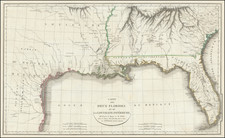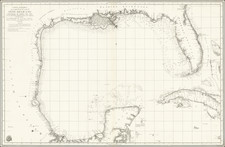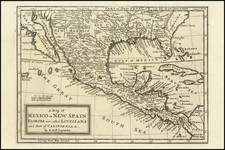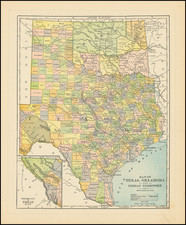Rare view of New Braunfels, Texas, in 1881, published by Augustus Koch.
As noted on the Amon Carter Museum Website exhibition of Bird's-Eye Views of Texas:
In depicting New Braunfels, founded in 1845 under the auspices of the Adelsverein (also known as the Society for the Protection of German Immigrants in Texas), Augustus Koch chose the perspective from the Sophienburg (Fort Sophia), the headquarters that Prince Solms-Braunfels established for the colony. Built on a hill on the south side of the new settlement with a view of the Comal River and its confluence with Comal Creek, the Sophienburg was to have included a headquarters building and a fort. The fort was never completed, but the original log cabin headquarters building (14 on map), shown in the center foreground of the print, is easily recognizable because of the sagging roof that seems about to collapse. In fact, the building was destroyed five years after Koch's visit by a hurricane that annihilated Indianola.
New Braunfels had been a regional agricultural center for decades by the time the International-Great Northern Railroad linked it with Austin and San Antonio in 1880 and 1881. "We have now entered into communication with the whole world by rail-road," announced the editor of the Neu-Braunfelser Zeitung. He predicted that the "steamsteed" would connect the city with the Pacific as well as "Montezuma's legendary residence," Mexico City itself. The railroad is prominently featured in the foreground of the print, with two steam locomotives heading toward each other on the same track. The passenger depot (6) is located at the intersection of San Antonio and Hill streets and the freight depot is at Church and Hill streets.
Next in importance seem to be the mills along the Comal River: Landa Flour Mills on Comal Springs (4), which feeds the Comal River; Comal Mills (13), on the Comal Springs on the north side of town; the New Braunfels Woolen Manufacturing Company (5); and a brewery (8). The cotton gin and oil mill (15), only a block off the Public Square, suggest the growing importance of the city as a processing and transportation center. Two churches-one of the German Protestant churches (9) and the Roman Catholic Church (10)-are equally as prominent. The Comal County Courthouse is not as prominent as courthouses in many Texas towns because the public square is open, rather than having the courthouse located in its center.
While Koch did not trace the course of the Comal Creek and river as precisely as he might have, the features of the landscape are generally accurate and would have been easy to recognize by residents. The large building on Academy Street, between Bridge and Mill streets, is the public school, which New Braunfels residents established even before the Texas Constitution of 1876 made support of public education mandatory. Much of the strip of land between Comal Creek and the river became Landa Park, which attracted tourists and excursion trains from San Antonio and Austin. Koch showed Comal Town, which grew simultaneously with New Braunfels, on the north side of both the river and the creek.
Augustus Koch began his career as an itinerant birds-eye view artist in California in 1870. Over the next nearly 30 years, he would criss-cross the country, creating more than 100 views of towns, large and small. His large format, highly detailed views are among the most coveted among collectors, employing a unique style which provides both physical details of the town and a map-like quality.
Koch's view of New Braunfels is quite rare. Repps locates only a single example (Amon Carter Museum).
Augustus Koch (1840-?) was one of the most prolific American engravers of Birds Eye Views working outside of the major publishing centers. Koch initially served in the Union Army during the Civil War as a clerk and draughtsman in the Engineers Office in St. Louis. Although his English was poor, he was later commissioned as an officer and assigned to one of the Black regiments serving in Mississippi where he drew maps for the advancing Union forces. By 1865 he is thought to have contracted malaria and at 25, was discharged from the army.
By 1868, Koch had become an itinerant Bird's Eye View engraver. His earliest dated views are of Cedar Falls, Vinton, and Waterloo, Iowa. At that point his career seemed to take off and in rapid succession, maps by Koch were produced in every section of the country. In 1870 he produced 5 maps in Utah, Wyoming and California. In all, Koch produced over 100 views, including over 20 Texas Views, during a career of 30 years. His last recorded view was produced in Montana in 1898.
Reps notes that while Koch engraved fewer views than some of his contemporaries, "no American viewmaker traveled more widely in search of subjects. . . "












![[ Texas Oil Map ] Map of Terrell County Texas](https://storage.googleapis.com/raremaps/img/small/102589.jpg)

![The North Coast of the Gulf of Mexico from St. Marks to Galveston . . . 1844 . . . Additions to 1856, including the Surveys of Comr. Powell, Lt. Simmes & Profr. Coffin, U.S. Navy [and] St. Marks to Galveston. Sheet II. . . . 1845. Additions to 1851 . . . .](https://storage.googleapis.com/raremaps/img/small/89497.jpg)